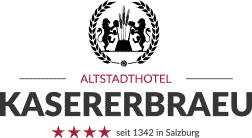Archabbey / Abbey of St. Peter Salzburg
The monastery itself was founded in 700 AD
Architecture and interior
Some of the altarpieces were created by Martin Johann Schmidt
Inside the church of St. Peter, the Romanesque architectural form is still clearly recognizable. The rich number of altars shows the rococo style of the church. Some of the altarpieces were created by Martin Johann Schmidt, also called “Kremser-Schmidt”, one of the most famous devotional and altarpiece painters of the 18th century. The two huge Renaissance bronze chandeliers from 1609 are a gift from Prince-Archbishop Wolf Dietrich.

Around 700, the Frankish missionary Rupert came to Salzburg and founded the church of St. Peter and a monastery on the soil of the once Roman Juvavum, whose oldest monastic community on German soil has endured uninterruptedly through the centuries to the present day.
Under the abbot-bishop Arno, a friend of Charlemagne, Salzburg was elevated to an archbishopric. In May 1127, the church and buildings burned down completely and the abbot Balderich had a three-nave Romanesque basilica built between 1130 and 1143. The church and the monastery district were changed several times in the following years. As one of the oldest Gothic buildings in Salzburg, the St. Vitus Chapel was built in 1319. The splendid Romanesque portal was built around 1240. The redesign in the Rococo style took place in the 18th century under the enterprising and art-loving Abbot Beda Seeauer. In the first half of the 20th century Archabbot Petrus Klotz founded the Collegium Benedictinum with facade frescoes by Anton Faistauer.
The long gallery
1657-1661 the Archabbey of St. Peter erected the building
The ownership of the new building was divided: The cellar and the main floor, which became the painting gallery, belonged to the archbishop, the other rooms to the abbey.
This “Long Gallery bey Hof” corresponds to a type of building developed in Italy in the 16th century: a long corridor with windows on one side and a continuous wall for paintings on the other. All windows face north to allow even, but not direct, light to fall on the images. The Long Gallery is one of the earliest such buildings north of the Alps.
The archbishops’ collection of paintings included works by Peter Paul Rubens, Johann Heinrich Schönfeld and other renowned artists. After the end of the archbishop’s rule in 1803, it was dissolved and a large part of the paintings went to Vienna. The room itself was granted to the Abbey of St. Peter in 1819.
From 2001 to 2009, St. Peter's had the Long Gallery extensively renovated. The gallery is now open to the public via the Cathedral Museum





